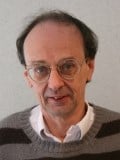
Course Title: Chemometrics for Spectroscopy
Course outline
The course will provide an introduction to the key ideas in multivariate calibration for spectroscopy. The focus is on NIR, though many of the ideas are more widely applicable. The topics covered will include the need for multivariate calibration, the problems posed by high-dimensional spectroscopic data, the choice of training samples, methods for spectral pre-treatment, algorithms for both quantitative and qualitative calibration, and a discussion of the importance of proper validation. The aim is that the course should be useful both for spectroscopists with little or no experience of multivariate calibration and for chemometricians with little or no experience of this application.
Bio
Tom Fearn is Professor of Applied Statistics in the Department of Statistical Science at UCL. Before joining UCL in 1989 he worked for 11 years at the Flour Milling and Baking Research Association, where he designed experiments, analysed data, and developed an interest in the analysis of high-dimensional spectroscopic data that continues to the present day. His publications include the first book on the NIR analysis of food as well as a User Friendly Guide to Chemometrics. He has a long-standing collaboration with Ana Garrido’s research group in Córdoba, Spain, and is currently working with this group on the spectroscopic authentication of Iberian ham. Tom is Chemometrics Editor of JNIRS, and wrote the Chemometric Space column in NIR news for longer than he cares to remember. He received the Hirschfeld award for contributions to NIRS in 2001 and is currently President of the International Council for Near Infrared Spectroscopy.
Webpage: https://www.ucl.ac.uk/statistics/people/tomfearn
What is your relation to chemometrics?
I was doing chemometrics before it was called chemometrics.
What are your favourite methods of data analysis, and why?
For analysing spectroscopic data my favourite method is PLS, because it works. In some ways it is also my least favourite, because it is so hard to beat it with anything new.
How do you see the future of chemometrics?
I’m worried that it will be swept away in the same tidal wave of “Data Science” that is currently threatening Statistics.
What do you look forward to at SSC16?
The pickled herring and the midnight sun.
